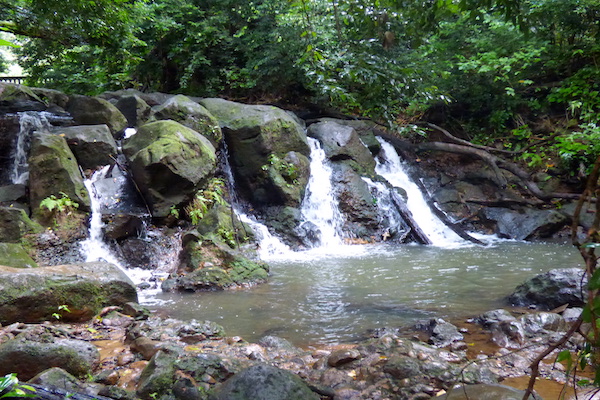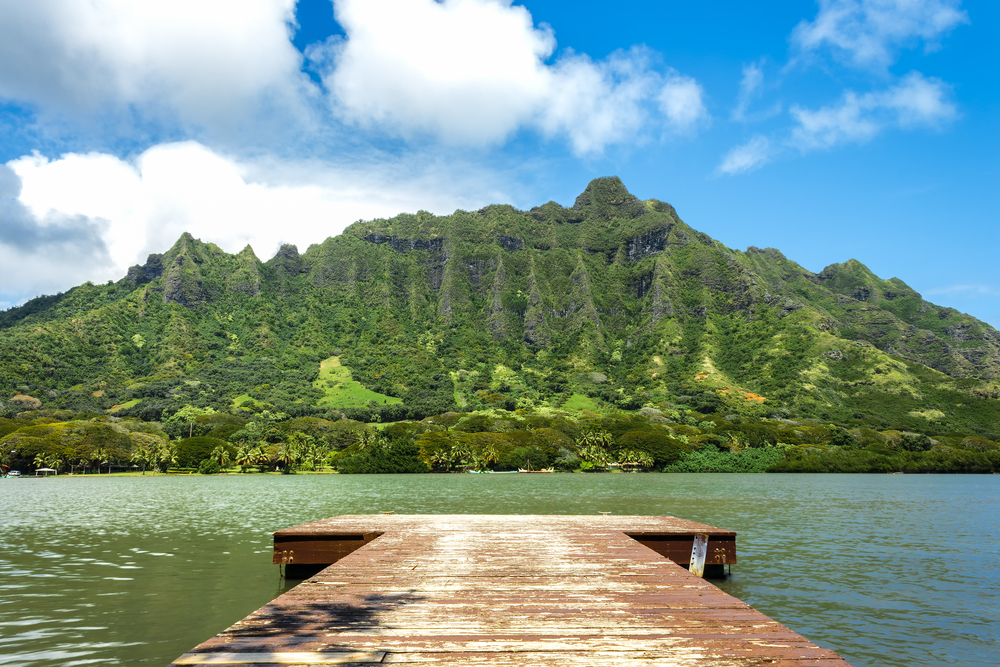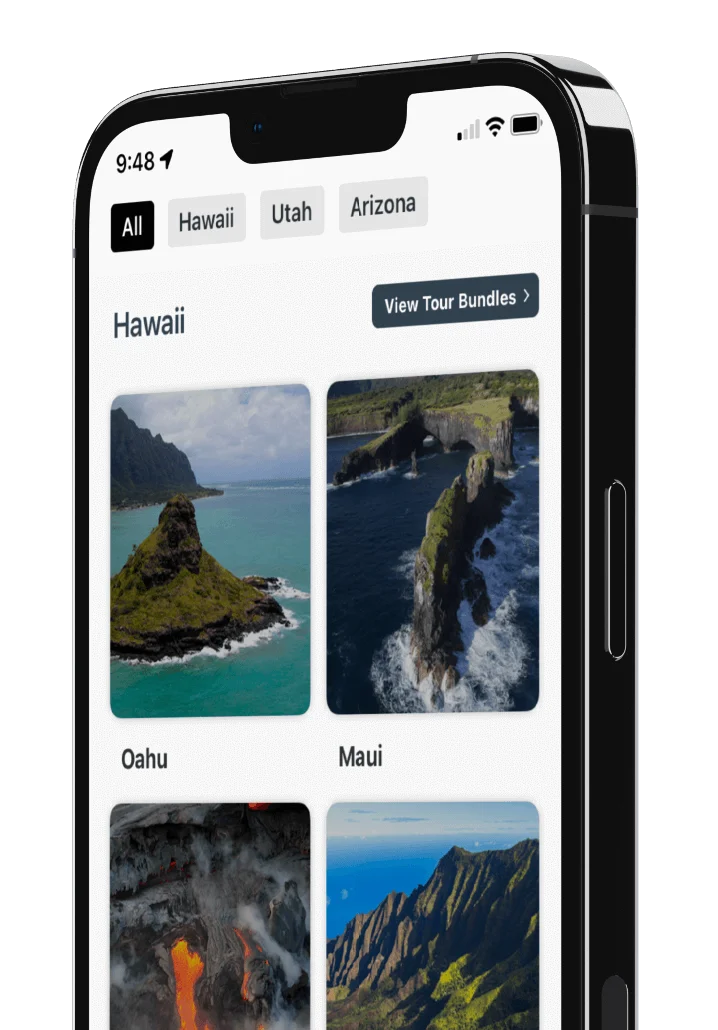
Volcanoes in Hawaii: Breaking Down Hawaii's Volcanoes by Island

Each of the Hawaiian Islands were created by volcanic activity, so getting acquainted with Hawaii’s volcanoes is a great way to get to know the islands themselves. If you’re looking to explore the volcanoes, or just learn about their history, you’re in the right place! Here, we’ll give you an overview of each of Hawaii’s most prominent volcanoes.
Shaka Guide also has several Hawaiian volcano tours that can point you in all the right directions if you’re looking to explore these ancient attractions including the Volcanoes National Park Driving Tour for the Big Island, Haleakala National Park Driving Tour on Maui, or our East Oahu Shoreline Drive Tour.
Planning Your Visit to Hawaii’s Volcanoes
A few of Hawaii’s volcanoes are within national or state parks, which means a visit might require a bit of planning. In this section, we’ll give you entrance fees and other information important for your visit to Hawaii’s volcanoes like where to see lava.
Where to See Lava in Hawaii
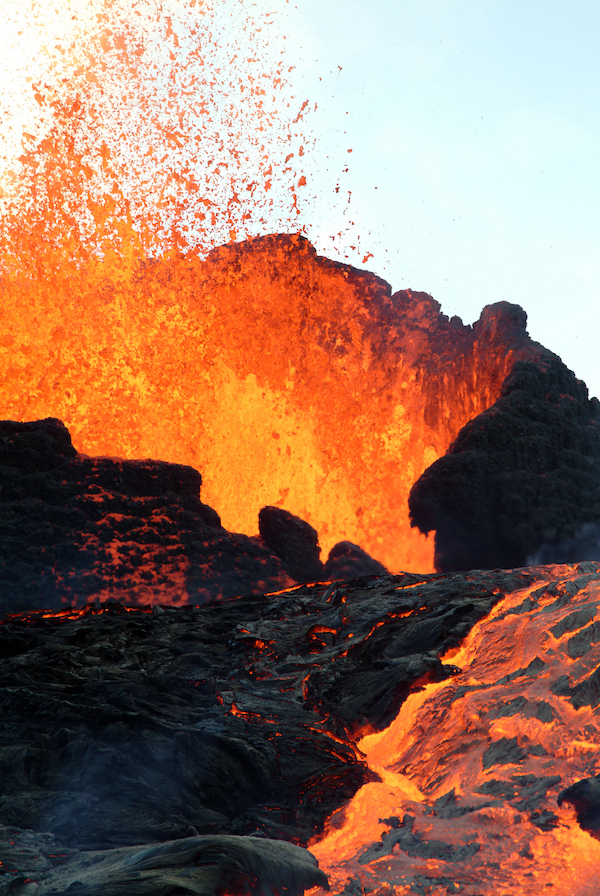
Lava eruption at Hawaii Volcanoes National Park, Big Island.
The Big Island is one of the only places in the United States where you can consistently find lava, however, there is no guarantee that there will be a flow when you visit the island. Kilauea volcano on the Big Island had remained active from 2009 to 2018. Following a 2018 eruption there was no flowing lava, but, as of Decemeber 2020, a lava lake has formed in the Halema‘uma‘u Crater. Check the National Park Service's website every month or so to find out if there are renewed opportunities to see lava in Hawaii!
Take our Volcanoes National Park Driving Tour, it visits Kilauea Lookout for a chance to see the lava's glow at Halema‘uma‘u Crater.
Hawaii National Parks Entrance Fees:
- Hawai’i Volcanoes National Park: $30 per vehicle
- Haleakala National Park: $30 per vehicle
- Diamond Head Entrance Fee: $10, cash only, per vehicle
Big Island of Hawaii Volcanoes
The Big Island of Hawaii is the perfect destination if you’re looking to experience Hawaii’s volcanoes. There are currently four active volcanoes in Hawaii, all of which are on the Big Island. There are six volcanoes total, which worked together over about a million years to create the paradise you’ll be experiencing on Big Island. Three of these volcanoes hold world records with regard to size, height, and activity.
Kilauea
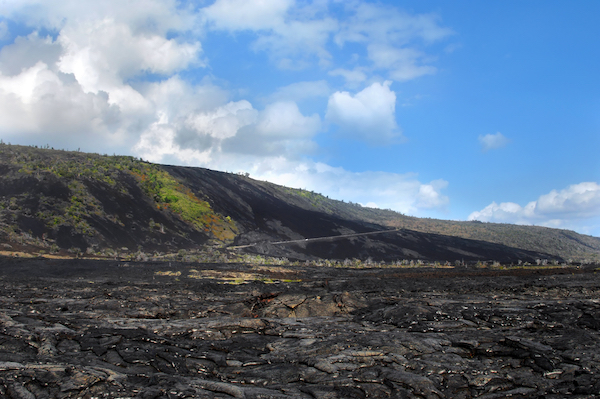
Kilauea chain of craters in Big Island's Hawaii Volcanoes National Park, Big Island.
Kilauea is the most active volcano in the entire world, which makes the Big Island the ideal destination if you’re in search of a lava viewing experience. Located in Volcanoes National Park, Kilauea's last eruption was in Decemeber 2020, and prior to that the previous eruption was in 2018.
If you’re visiting, don’t be alarmed that Kilauea was also ranked the most likely volcano to threaten lives and infrastructure in the United States. Kilauea is a shield volcano, which means it would flow at about six miles per hour at its absolute fastest.
According to Hawaiian traditions, Pele, the Volcano goddess is said to live in a fiery pit on Kilauea called Halemaʻumaʻu. If you’re interested in learning more about traditional Hawaiian beliefs, Kilauea and the other volcanoes of Hawaii Volcanoes National Park is an excellent place to start.
Mauna Loa
Mauna Loa is the largest volcano in the world by mass and volume. It’s an active volcano, which could be due for an eruption at any point, however it hasn’t erupted since 1984. It also erupted in 1926 and 1950, but don’t worry — none of these eruptions claimed lives.
Like Kilauea, Mauna Loa is part of Hawaii Volcanoes National Park. If you’re looking for a guide through the park, check out Shaka Guide’s Volcanoes National Park Driving Tour.
Mauna Kea

The Mauna Kea Observatories at the summit of Mauna Kea, Big Island.
Mauna Kea is a significant spot for traditional Hawaiian beliefs and legends. All of the Big Island’s volcanoes were generally considered sacred, however, Mauna Kea, the tallest, holds special significance.
You’ll also be surprised to learn that Mauna Kea is the tallest volcano and mountain in the world. Although Everest is generally thought to be the largest, Mauna Kea’s base is hidden 6,000 meters below sea level. This combined with the visible 4,000 meters above sea level, makes Mauna Kea over 1,000 meters taller than Everest.
Mauna Kea is also the optimal location for astronomical observation. As such, it is home to several of the world’s most powerful telescopes and observatories.
If you’re headed up to Mauna Kea, be sure to stop at the Mauna Kea Visitor’s Information Station, if for no other reason than to acclimate to the change in altitude, which is a necessity. The station is also an awesome educational experience with monthly star gazing via the station’s high-quality telescopes. (Currently Closed due to Covid 19)
Oahu Volcanoes
The volcanoes of Oahu are either dormant or extinct. The difference? An extinct volcano is not expected to erupt again, while a dormant volcano is active with the potential to erupt again. Of these volcanoes, the island was created almost entirely by two: Ko’olau making up the eastern portion of the island and Waianae forming the other. These two ancients aren’t very recognizable as volcanoes anymore. If you’re looking for a more iconic volcano, there are several other, more recognizable, craters to view on Oahu.
Ko’olau Range
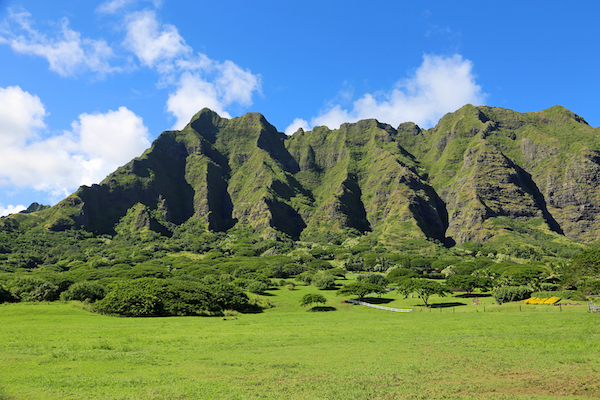
Breathtaking view of the lush Ko'olau mountains, Oahu.
The mountain range that makes up the windward, or eastern side, of the island is actually not a mountain range as they are typically thought of. Most mountain ranges are created by the movement and collision of tectonic plates. Ko’olau is actually the western half of a huge crater shield volcano, the other half of which slid into the Pacific nearly three million years ago. The present site of Kaneohe Bay is all that is left of the massive volcano’s caldera or central, large crater. Ko’olau hasn’t been active for over 10,000 years.
Makapu’u
At the end of the Ko’olau Range, Makapu’u is a beautiful beach and a nice, easy hike created by the massive volcano. Atop the volcanic ridge to the east of the beach, you’ll find a lighthouse, which houses the largest lense in the United States. The hike to the lighthouse is about 1.5 miles round trip.
Waianae Range
The ancient Waianae volcano created the western portion, or leeward side, of the island. Similarly to Ko’olau, the Waiʻanae Mountain range was formed when half of the Waianae volcano fell into the ocean. Intense erosion has worked on the mountain range since it stopped erupting about two-and-a-half million years ago, but the crest left by the remnants of Waianae’s Ka’ala caldera is still the highest point on Oahu. Today, you can take an intense but beautiful hike up Mt. Ka’ala, which is almost seven miles round trip with an over 3,500-foot elevation gain.
Diamond Head

Aerial view of Diamond Head Crater, Oahu.
Diamond Head is one of the most recognizable volcanic craters on Oahu. Located right outside of Honolulu, as you drive by, the shape of the tuff cone volcano might be more in line with your mental image of volcanoes than Waianae or Ko’olau. Known as Le’ahi to Hawaiian’s, Diamond Head was given its English name when foreigners arrived and mistook the sparkling calcite for, you guessed it, diamonds. There’s a great hike to the summit of the crater which takes about two hours to complete and offers beautiful views of Honolulu and Waikiki Beach. Start planning your trip to Diamond Head here.
Koko Crater
Koko Crater is also easily recognizable as an extinct volcano and includes a hike that’s just under a mile to the summit. Be prepared, though, the trail is made of over 1,000 steps and the hike can be exhausting! This hike is actually revered for it's steep elevation and difficulty. Inside the crater, you can visit the Koko Head Botanical Garden, which is one of the best succulent and cacti gardens in the world.

Koko Head Crater overlooking Koko Marina, Oahu.
Hanauma Bay
Today, Hanauma Bay is the sight of a beautiful nature preserve and is one of Hawaii’s most valuable natural resources with world-class snorkeling. However, about 32,000 years ago, Hanauma Bay was the site of a tuff ring volcano. Tuff rings are formed when relatively young magma from volcanic vents meet ocean water. You can gain entrance to Hanauma Bay and the amazing snorkeling it offers for a small fee. Start planning your trip to Hanauma Bay here.
Shaka Guide visits Diamond Head, Makapu’u and Hanauma Bay on our East Oahu Shoreline Drive.

Visitors soak up the sun at Hanauma Bay, Oahu.
Maui Volcanoes
About 75 percent of Maui’s landmass was created by a single, gigantic shield volcano called Haleakala. The rest of the island’s land was formed by the Mauna Kahalawai volcano to the west. If you look at the island’s geography, it’s easy to see how these two large volcanoes formed.
Haleakala

Cinder cones at Haleakala National Park, Maui.
Haleakala is the particularly giant volcano that created the island’s eastern mass of land. Nowadays, Haleakala is a wonderful 33,000-acre national park perfect for watching the sunrise or sunset. Don’t be fooled by the so-called Haleakala Crater, however, which isn’t actually a volcanic caldera but a valley created by wind erosion.
Haleakala means house of the sun, which refers to the Hawaiian legend of Maui, a demigod who imprisoned the sun in the crater to lengthen daylight hours. If you want to hear more about the traditions and history of Haleakala, check out our two Haleakala National Park Driving Tours.
Mauna Kahalawai
The West Maui Mountains, as they are often referred to, are a volcanic collection of ridges that were formed by a series of eruptions about 320 thousand years ago. Since then, the remnants of this giant shield volcano have undergone heavy stream erosion which created the mountainous landscape you can visit today! If you're looking for adventure on this side of the island check out our West Maui Coastline Tour that travels around these mountains stopping at hikes, scenic spots, and cultural sites.
Kauai Volcanoes
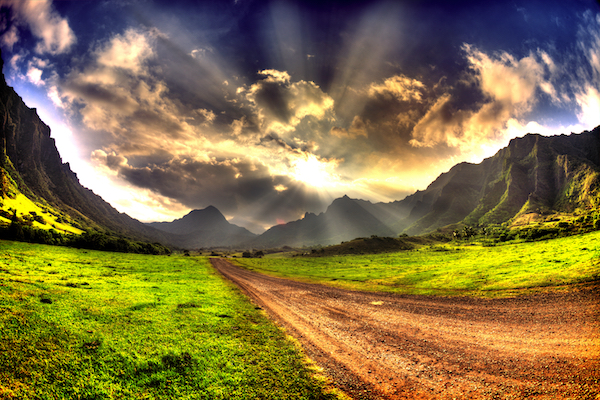
Magnificent views of Kalalau Valley, Kauai.
There has long been some debate over exactly how many volcanoes formed Kauai, however, modern research suggests that there were two undersea volcanic vents that contributed to the island’s mass. Today, neither of these vents are easily identifiable after millions of years of weathering and erosion on Hawaii’s oldest island. This extensive weathering is responsible for the unique, sharp ridges that Kauai is known for.
If you’re planning to visit the Na Pali Coast or hike its Kalalau Trail, you have these volcanoes to thank for the beauty you’re going to witness. The Na Pali Coast is one of the most surreal attractions in all of Hawaii, so if you’re on Kauai, you owe it to yourself to take a boat tour or hike along the beautiful ridges and beaches that the Kalalau trail has to offer.
Traveling to Hawaii? Shaka Guide has 21 tours across the islands. Check out our tours for Big Island, Oahu, Maui and Kauai.
RELATED ARTICLES:

 Buy Gift Card
Buy Gift Card








